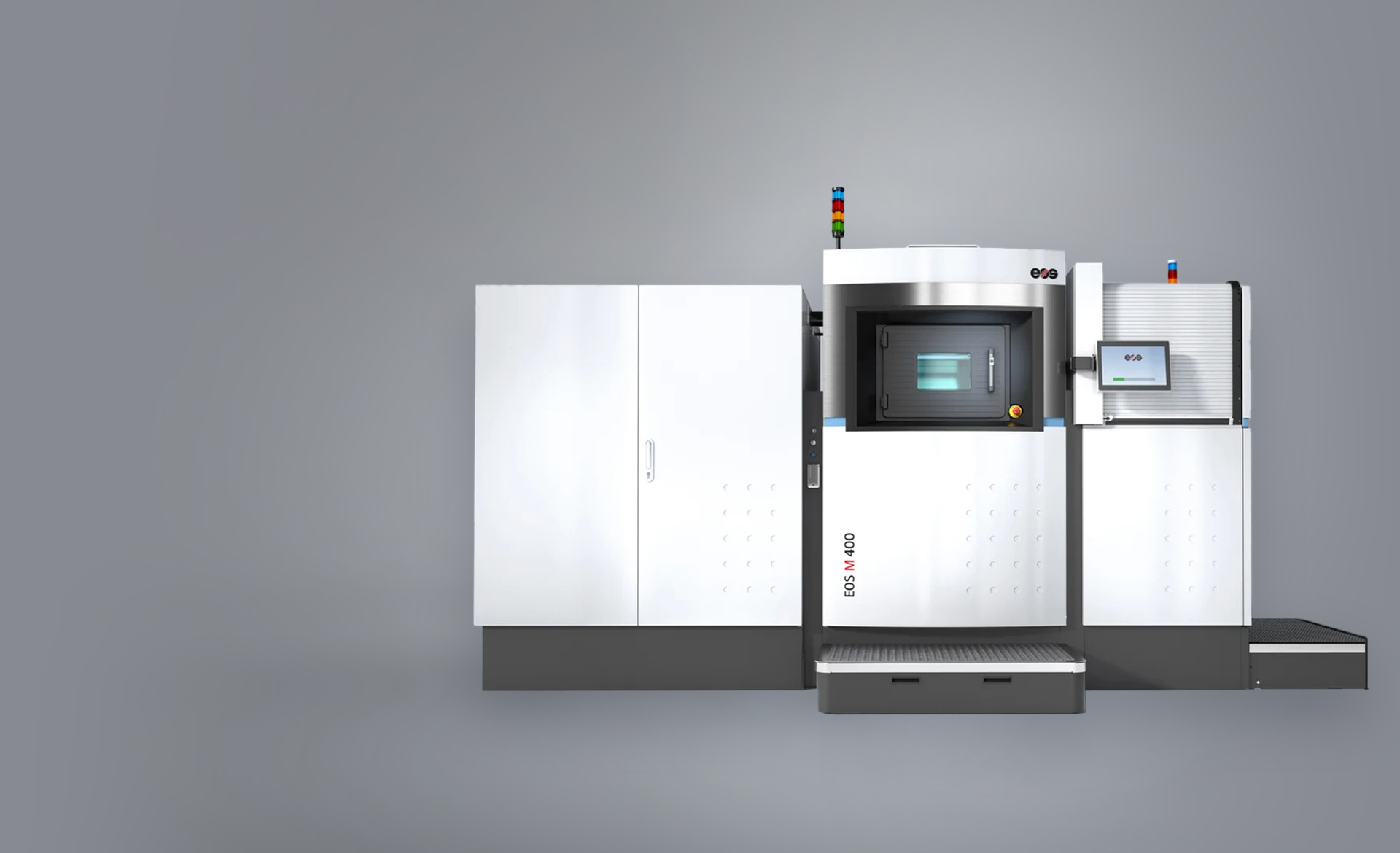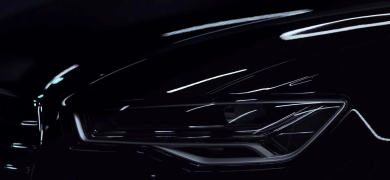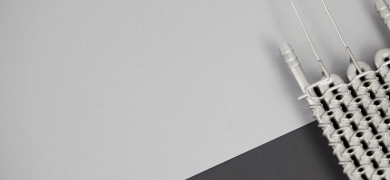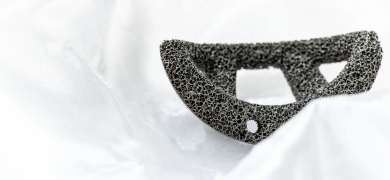

EOS M 400
Proven DMLS Quality for Industrial Production
Increased productivity thanks to 1000-watt laser power
Modular platform with process and set-up station
Build volume of 400 x 400 x 400 mm
Highly Productive System
1000-watt laser power increases productivity with higher build rates and thicker layers. Ideal for serial manufacturing of large metal parts.
Easy to Use
Coating both sides with powder material reduces production downtime. A circulating air filtering system with automatic cleaning means fewer filter changes and longer service life.
Broad Portfolio of Materials
A comprehensive collection of materials is available, from light metals to stainless steel, tool steels and super alloys.
Technical Data EOS M 400
- Construction Volume
- 400 x 400 x 400 mm (15.8 x 15.8 x 15.8 in) (height incl. build plate)
- Laser Type
- Yb-fiber laser; 1,000 W
- Precision Optics
- F-theta-lens
- Scan Speed
- up to 7.0 m/s (23 ft/s)
- Focus Diameter
- approx. 90 µm (0.0035 in)
- Power Supply
- 50 A
- Power Consumption
- max. 50,2 kW / typical 16,22 kW
- Compressed air supply
- 7,000 hPa; 20 m³/h (102 psi; 706 ft³/h)
- Machine Dimensions (W x D x H)
- 4,181 x 1,613 x 2,355 mm (164.6 x 63.5 x 92.7 in)
- Recommended Installation Space
- min. 6,500 x 6,000 x 3,300 mm (256 x 236 x 130 in)
- Weight
- approx. 4,635 kg (10,218 lb)
- Software
- EOSPRINT 2, EOSTATE, EOSCONNECT Core, EOSCONNECT MachinePark, EOSCONNECT MachinePark, Materialise Magics metal package and modules
Compatible materials
 3D Printing in Practice
3D Printing in Practice
Additive Manufacturing for Serially Produced Vehicles
We help our customers implement additive manufacturing wherever it can fully demonstrate its strengths. This ranges from major changes to logistics systems, detailed equipment customization and lightweight parts, to engine technology fine-tuning. 3D printing technology holds the potential to optimize the automotive production value chain and react quickly and flexibly to new trends. This potential is extremely valuable in an industry where every player, automotive manufacturer, OEM and tooling provider faces high costs and innovation pressure.
More information → 3D Printing in Practice
3D Printing in Practice
More Energy Efficiency With Additive Manufacturing
For many applications, sophisticated cooling technology is important. For gaming PCs, data centers, automobiles, LED modules, the chemical industry and many more; wherever you need to dissipate heat, heat exchangers and cooling elements are essential. Their size is often a challenge. For example, hand-held electronic devices need to house increasingly powerful technology that requires cooling. In addition, they need to integrate new functionality quickly, meaning that the heat problem needs to be solved again and again. This quickly pushes conventional production processes to their limits.
More information → 3D Printing in Medical Technology
3D Printing in Medical Technology
Additive Manufacturing for Orthopedic Technology
EOS additive manufacturing technology creates precisely fitting instruments and implants directly from CAD data.
The process manufactures implants based on anatomical data collected from the wearer and allows them to be delivered quickly. This avoids any waiting times or complications due to extended periods of inactivity, so the implants fit better. It also speeds up the healing process as a whole and has a lasting positive impact on the patient’s quality of life.
More information →

